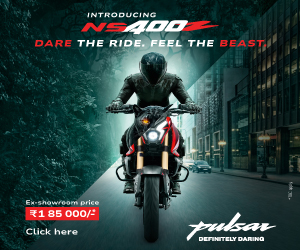
Do we still need GP racing?
The Philistines are in the building and destroying the grand old sport of Grand Prix racing. But who cares, wonders Mat Oxley, maybe we don’t need it anymore

The plan fot this month was simple: switch into curmudgeon mode and lay into the bunch of mindless vandals who are trashing GP racing.
I was going to rant and rage against their grave act of Philistinism – replacing 250 GPs with a glorified World Supersport series. The 250 world championship has been in existence since the dawn of grand prix racing. During those six decades the 250 crown has been worn by Ubbiali, Hailwood, Read, Saarinen, Lavado, Sarron, Spencer, Cadalora, Biaggi, Capirossi, Rossi, Pedrosa, Lorenzo and many more. But 250s aren’t good enough for GP racing’s meddlesome rulers who think they can do better. Mike the Bike must be spinning in his grave at a steady 19,500rpm.
I was going to wail and gnash my teeth at the politics behind the decision – the sport’s most rapier-like race bikes must die because the Japanese manufacturers don’t do two-strokes any more, nothing more than that. As one MotoGP insider told me: “this decision is commercial and political, it is not a technical discussion”.
I was going to foam at the mouth as I complained that street 600s in trick chassis doesn’t sound like real GP racing to me. And I was going to glow with incandescent rage at the contradictory regulations which make prototype 600s eligible (to appease WSB boss Flammini) but keep them out by allowing riders to claim the engine of any rival for just 20,000 euro. Thus this so-called GP class will use hopped-up CBR, GSX-R, R6 and Ninja street bike engines.
I was going to cackle dementedly at the madness of the claiming rule, which gets the following vote of no confidence from an US Superbike team manager: “We’ve used claiming rules in the USA at various times and they never work. They are the work of the devil, with help from inept tech guys who don’t want to be bothered enforcing the rules. Claiming rules don’t work and are patently unfair. Give my crew chief a stock bike and a pile of parts and give Billy Joe Bob a stock bike and the same pile of parts and my guy’s bike will be better every time, because he knows what he’s doing. So why should Billy Joe Bob be able to steal his bike?” And I was going to explain why claiming rules are good for one thing and one thing only – the salaries of lawyers – because they tend to ensure that races are not won on the racetrack but in the courtroom.
Most of all, I was going to sob bitterly at the relentless homogenisation of our sport – at this rate every racing class will look and sound the same within a few years. How daft is it that the premier categories in both MotoGP and World Superbike are for big four-strokes and street-based 600s?
Then the penny dropped. Maybe there is method in the madness of the people behind the 600s – Dorna and the MSMA (the Motorcycle Sports Manufacturers Association). Perhaps this is their secret agenda: make MotoGP and WSB pretty much identical and then take the next logical step: merge them into one. With several years of global recession and a new age of environmental consciousness looming ahead of us it makes a lot of sense, in all kinds of ways. The factories are hurting bad; Honda has already pulled out of Formula 1, how long before one or more of the manufacturers decide they can no longer afford the hideous expense of MotoGP (rated as ten times more expensive than WSB)?
So maybe it really is time to say goodbye to real GP racing. It could easily be argued that we no longer need prototype engines because there’s no need to continue increasing horsepower. And anyway, no doubt in the not-too-distant future there will be tougher legislation restricting emissions and thus performance, both in racing and on the street. High-tech development budgets could be funnelled into environmentally focused GP support classes, perfecting new low-emissions technology.
Amalgamating MotoGP and WSB regulations would create a new racing class that uses WSB-spec street engines and MotoGP-spec trick chassis, just like the old TT F1 world championship of the late 1970s and early 1980s, but this time with all the world’s greatest riders doing battle in the same race. Older readers will surely remember the TT F1 format: Hailwood on his big red Duke, Read on his 900 Honda. That way, at least Mike the Bike might be able to rest in peace.
Blurb: Honda has already pulled out of Formula 1, how long before one or more of the manufacturers decide they can no longer afford the hideous expense of MotoGP (rated as ten times more expensive than WSB)?

 BMW MOTORRAD’S PREMIUM PRODUCTS FROM THEIR 2010 LINEUP ARE AN ABSOLUTE DELIGHT FOR FANS AND FANATICS
BMW MOTORRAD’S PREMIUM PRODUCTS FROM THEIR 2010 LINEUP ARE AN ABSOLUTE DELIGHT FOR FANS AND FANATICS





 The two-wheeler industry from India and around the world comes together in Delhi for the 10th Auto Expo to flaunt their latest offerings. We take you through the major action at one of Asia’s largest automotive exhibitions
The two-wheeler industry from India and around the world comes together in Delhi for the 10th Auto Expo to flaunt their latest offerings. We take you through the major action at one of Asia’s largest automotive exhibitions








































